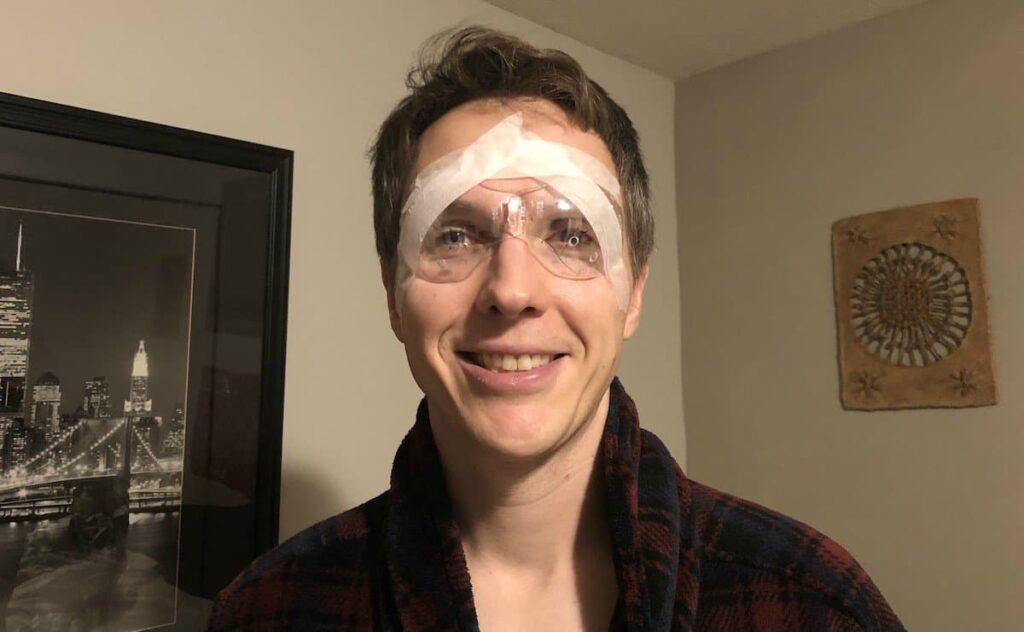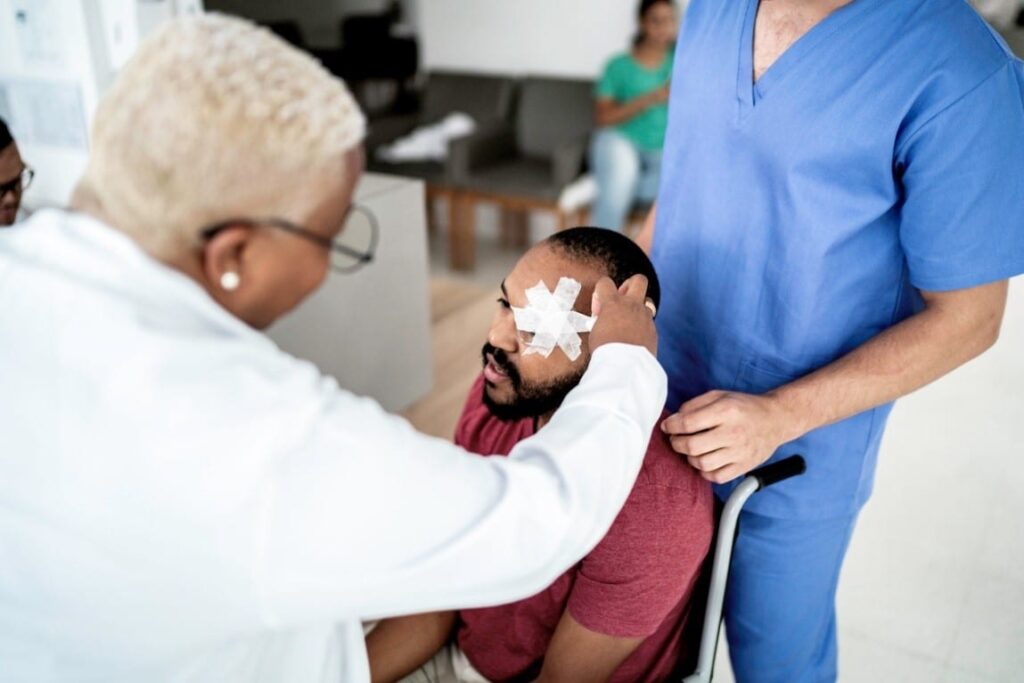Phacoemulsification cataracts surgery is quickly replacing traditional cataracts treatments because it is a safe procedure with a low risk of complications. After a brief, painless outpatient procedure, the vast majority of patients report significant improvement in their vision.
Although complications after cataracts surgery are incredibly rare, they can happen and harm the patient’s vision. Since many of these problems become apparent the day after cataracts surgery, it is advised that patients be examined the following day. Any issues that are found can then be dealt with quickly, enabling appropriate healing and recovery to occur.
The surgical trauma, particularly the ultrasonic energy and the fluid flowing into the anterior chamber, can result in ocular edema (blurred vision). The vision will be obstructed while the endothelial cells are working to remove the water from the corneal stroma.
Although corneal edema is less common due to the use of high-quality viscoelastic materials, prolonged cataracts surgery on a dense nucleus can still cause localized or, in some cases, widespread corneal swelling. A hypertonic saline solution and steroid-based inflammation management can help hasten the recovery of vision.

An elevated intraocular pressure (IOP)
The IOP should be within physiologic bounds for most patients. Depending on whether an incision has been made, it could be higher or lower due to residual viscoelastic. It is possible to use topical and oral medications to treat high intraocular pressure (IOP), but the patient needs to be kept under close observation. When the viscoelastic is removed from the anterior chamber, pressure usually returns to normal. Because tapping the anterior chamber to release aqueous is often just a temporary fix and exposes the eye to a high risk of infection, it is not generally recommended.
As there is usually some degree of inflammation brought on by surgical operations, it is normal to see some anterior chamber cells and flare the day after cataracts surgery. It is not normal to have an abnormally strong anterior chamber response to fibrin or a hypopyon; this might be a sign of endophthalmitis or the inflammation-causing condition toxic anterior shock syndrome.
Both need routine steroid administration to keep the inflammation in check, but the latter requires a diagnostic tap, an antibiotic injection, and prompt treatment to prevent eyesight and the eye from being irreparably damaged. Even though endophthalmitis usually doesn’t show up until several days following cataracts surgery, it may happen as early as the first postoperative day.
Anatomic problems are a symptom that surgery is necessary.
Tiny remnants of a cataracts may remain in the anterior chamber after phacoemulsification. This happens as a result of the cataracts being divided up after surgery and a possible little component remaining in the anterior chamber. These pieces of the cataracts have the potential to cause serious regional corneal damage and inflammation. A tiny, wispy cortical piece may be treated medically with steroids and a focused YAG laser treatment to break it up into smaller fragments and increase the surface area to volume ratio, but larger pieces will need surgical intervention. In cases of cataracts surgery when there has been a posterior capsule rupture and there are still lens pieces in the vitreous, a pars plana lensectomy and vitrectomy are indicated. In instances requiring cataracts surgery, a referral to an accomplished vitreoretinal specialist is advised.

IOL subluxation: If the IOL implant is not securely fastened, it runs the risk of slipping out of place and being subluxated. This is more often seen in situations where the lens was implanted into the ciliary sulcus as a consequence of a flaw in the eyeball’s posterior capsule. While minor episodes of IOL subluxation are conceivable, a significant displacement of the IOL from the visual axis has to be surgically corrected. In certain circumstances, this kind of suture attachment may assist in ensuring the IOL’s long-term stability and centering.
Leaking from an incision: If the IOP is low, it’s likely that there is leaking from an incision. A fluorescein dye leakage test may help identify the leak’s cause and determine how much fluid is escaping. Significant leakage from an incision indicates that a suture will very probably be required to close the wound, prevent further hypotony, and lower the risk of infection. The presence of iris tissue trapped within an incision is a sign that there is a problem with the incision since the iris often functions as a stopper to help shut leaky incisions.
Issues that linger for a long period
While many potential complications after cataracts surgery may be found on the first postoperative day, others take longer to appear. Following cataracts surgery, retinal issues such cystoid macular edema or retinal fractures are frequent and may appear days or weeks later. Only when the capsular bag has closed and the IOL has been positioned in its final position can relative refractive errors be accurately evaluated. Due to its frequency and tendency to appear weeks or months after cataracts surgery, posterior capsule opacification may not even be considered a side effect of the treatment.
Modern cataracts surgery is a wonderful procedure, but an ophthalmologist must still be involved both during and after the procedure. In the end, the surgical procedure and the healing process that takes place in the postoperative period together define the patient’s ultimate visual outcome.
Final thoughts
This article will keep you on track as far as making the appropriate decisions throughout your cataracts surgery recovery process if you’re wanting to manage the long-term problems of cataracts surgery.
Cataracts surgery is one of the most often used therapies. Each year, more than 4 million Americans and over 20 million other people get cataract surgery. One of modern medicine’s safest procedures is this one. Millions of individuals are able to regain a higher quality of life because to their better vision. Our eye clinic’s cataract experts always strive to provide patients the finest results possible in every clinical situation.
Looking to get professional advice on cataracts surgery? We’re only a message away.
